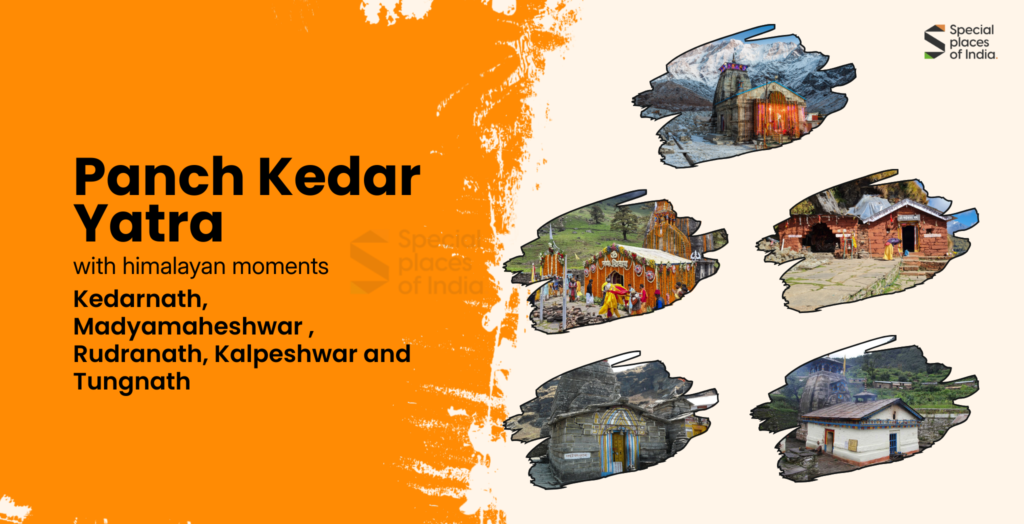The Himalayas are renowned for their spiritual significance in addition to their breathtaking beauty.
The Panch Kedar temples are one of the many hallowed locations in these majestic mountains. Deep in the Garhwal region of Uttarakhand, India, are these five ancient temples devoted to Lord Shiva.
Thousands of pilgrims and tourists visit these temples each year to obtain blessings, find serenity, and strengthen their relationship with God.
An essential component of the Hindu pilgrimage is the Panch Kedar temples. A distinct spiritual journey is offered by each temple, which symbolises a different body part of Lord Shiva.
Scattered throughout the high Himalayan ranges, the temples have a strong connection to the stories found in India’s oldest epic, the Mahabharata.
The Pandavas allegedly begged Lord Shiva for forgiveness following the Kurukshetra war, but he decided to hide in the Garhwal mountains. Shiva manifested in five different forms during the Pandavas’ search for him; each of these became a temple in Panch Kedar.
At different elevations, the five temples—Kedarnath, Tungnath, Madhyamaheshwar, Rudranath, and Kalpeshwar—present a spiritual and physical challenge to hikers. Long hikes through the mountains, surrounded by stunning scenery and unspoilt beauty, are part of the arduous journey to see these temples.
In addition to being a religious excursion, visiting the Panch Kedar temples allows one to experience the serene Himalayan landscape, which provides many people with spiritual fulfilment and comfort. This blog will walk you through the Panch Kedar pilgrimage’s history, significance, and hiking advice.

The Story Behind Panch Kedar
One of India’s oldest epics, the Mahabharata, contains the tale of Panch Kedar. The Pandavas, who are five brothers named Yudhishthira, Bhima, Arjuna, Nakula, and Sahadeva, are the subject of this story. They fought in the epic Kurukshetra War and were valiant and honourable warriors.
They were overcome with grief after their triumph. The battle claimed many lives, including those of their teachers and family. The joy of winning was overshadowed by the pain of losing.
The Pandavas chose to ask Lord Shiva, who is renowned for his mercy and ability to bring peace to troubled souls, for forgiveness in order to atone for the devastation they had caused during the conflict. Shiva, though, did not want to meet them casually.
He tried to escape them by hiding in the Garhwal mountains and changing into Nandi, his sacred vehicle—a bull.
Determined to find him, the Pandavas made their way through the rocky mountains and eventually arrived at Guptakashi, also known as “Hidden Kashi,” a sacred site dedicated to Lord Shiva. Bhima observed a bull grazing in the fields there. He immediately seized its legs and tail after realising it was Shiva in disguise.
However, as soon as Bhima clung to him, Shiva started to sink into the ground. Despite Bhima’s tenacity, Shiva disappeared and then resurfaced in five different places throughout the mountains.
The five holy Panch Kedar temples were formed from these five locations where Shiva’s body parts resurfaced. Devotees looking for forgiveness and spiritual serenity frequent these temples, each of which symbolises a distinct aspect of Shiva’s form.
The Five Temples of Panch Kedar

Each of the five Panch Kedar temples represents a different facet of Lord Shiva’s bull form. For devotees of Shiva, a trip to these sacred temples is considered an essential spiritual experience. Dispersed throughout the Garhwal region of Uttarakhand, each temple holds a particular place in the hearts of devotees who seek blessings from Lord Shiva.
Let us examine the significance of each of these temples.
1. Kedarnath Temple
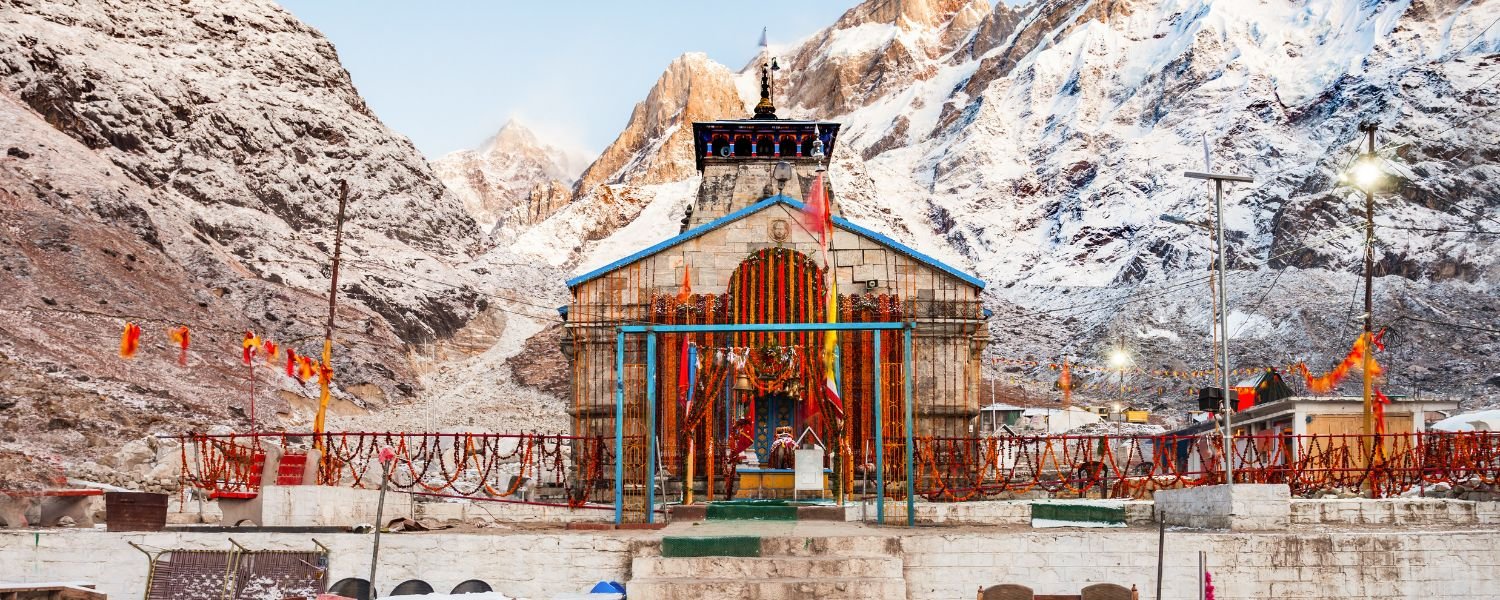
Of the five temples, Kedarnath is the most famous and important. It is dedicated to Lord Shiva’s bull-like hump. Kedarnath, one of India’s tallest temples, is 3,500 metres (11,500 feet) above sea level. The trip to Kedarnath is not simple. Pilgrims walk 18 to 21 kilometres on rocky mountain paths in 6 to 8 hours.
The best time to visit Kedarnath is from May to mid-November, when the weather is relatively stable, and the temple is open to pilgrims. Monsoon months (July–August) are generally avoided due to the risk of landslides and slippery trails.
The spiritual and devotional experience is enhanced by the difficulty of this trek.
2. Tungnath Temple
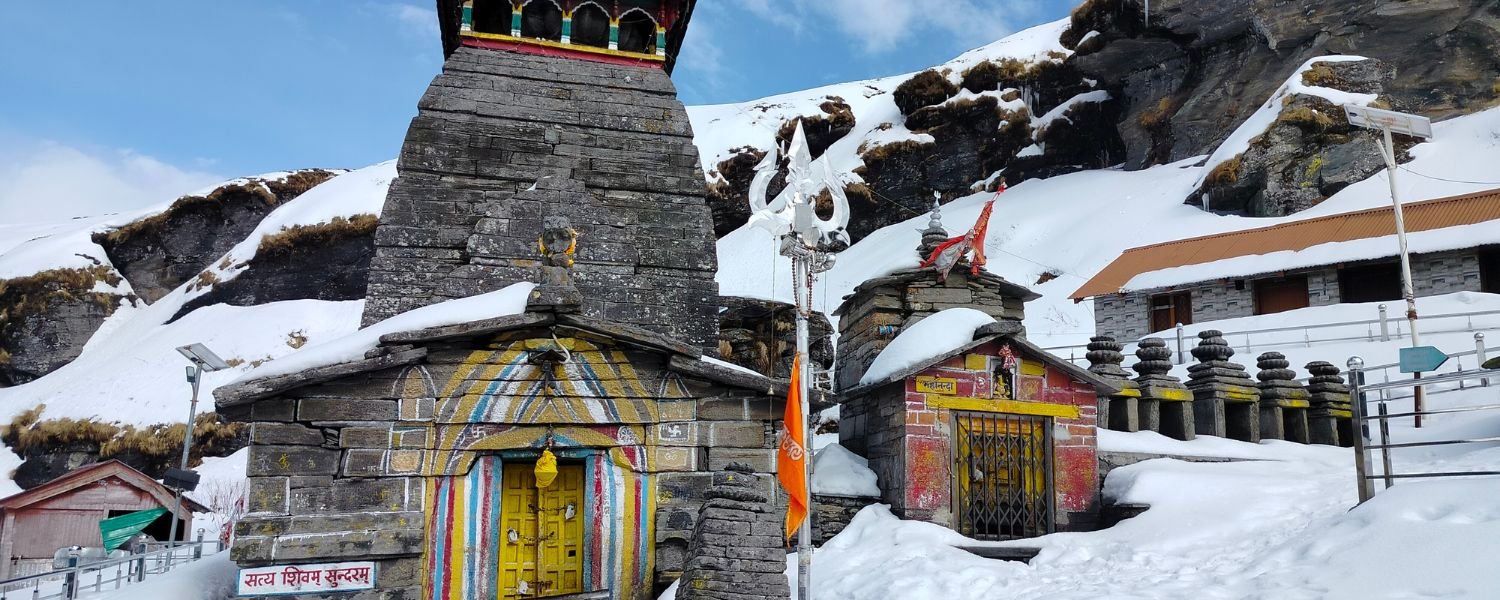
Tungnath is even higher than Kedarnath, at about 3,680 metres (12,000 feet) above sea level. It is dedicated to Lord Shiva’s arms and is one of the tallest Shiva temples in the world. The charming hill station of Chopta is where the roughly 3.5-kilometre drive to Tungnath begins.
Despite being shorter than the trip to Kedarnath, the high altitude makes it physically demanding. Experience the splendour of the Himalayas with the breathtaking views along the route. Chandrashila Peak, which is near Tungnath and an additional 1.5 km up, offers expansive views of the neighbouring snow-capped peaks.
Tungnath’s natural beauty and spiritual significance make it a must-visit destination for hikers and pilgrims alike.
3. Madhyamaheshwar Temple
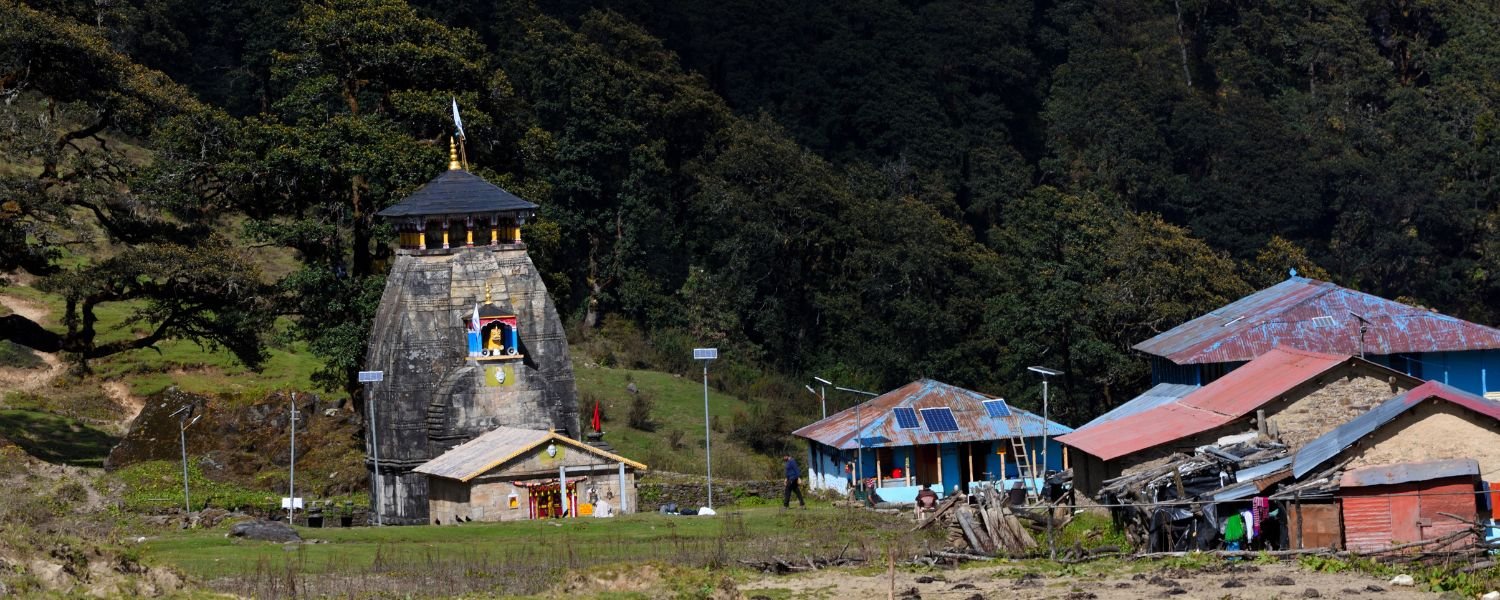
The Madhyamaheshwar Temple, which is approximately 3,500 metres (11,500 feet) high, is dedicated to Shiva’s navel and stomach. This temple offers pilgrims a more peaceful environment because it is relatively less crowded than Kedarnath and Tungnath.
The longer, about 32-kilometre trek to Madhyamaheshwar typically takes three days to complete. The pilgrimage route begins in the village of Ransi and takes them through serene landscapes, meadows, and verdant forests.
The leisurely hike allows visitors to fully appreciate the area’s natural beauty, making it a memorable experience. Madhyamaheshwar’s tranquil surroundings make it the ideal location for those seeking solitude to consider their spirituality.
4. The Rudranath Temple
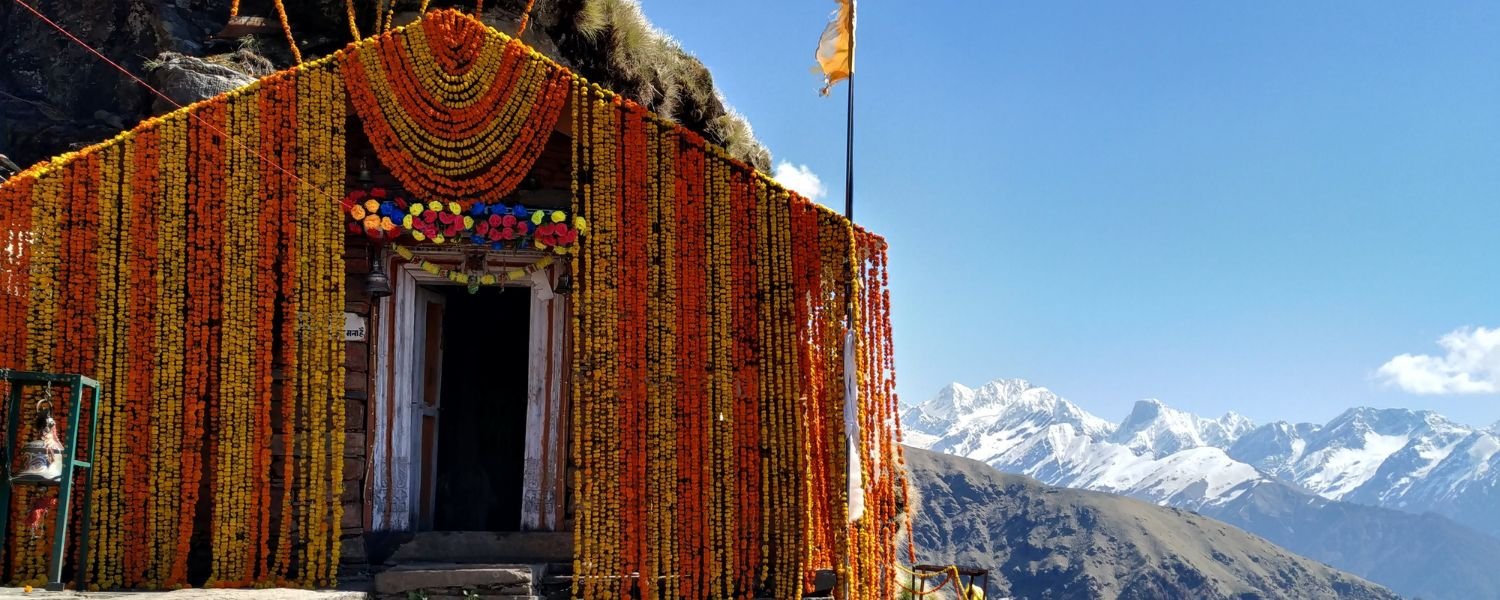
Lord Shiva is depicted at the Rudranath Temple, which is located about 2,100 metres (6,900 feet) above sea level. The Rudranath trek typically takes three to four days to complete and is between twenty and twenty-two kilometres long.
It is surrounded by alpine meadows and dense forests. The journey is challenging due to the high elevation and rough terrain, but it is worthwhile because of the temple’s tranquil atmosphere. The temple’s calm and spiritual atmosphere makes it a well-liked place for prayer and meditation.
The temple’s allure is increased by the trek’s stunning landscape, which includes views of the neighbouring mountains. This is the perfect place for people seeking inner peace and a connection with Lord Shiva.
5. Kalpeshwar Temple
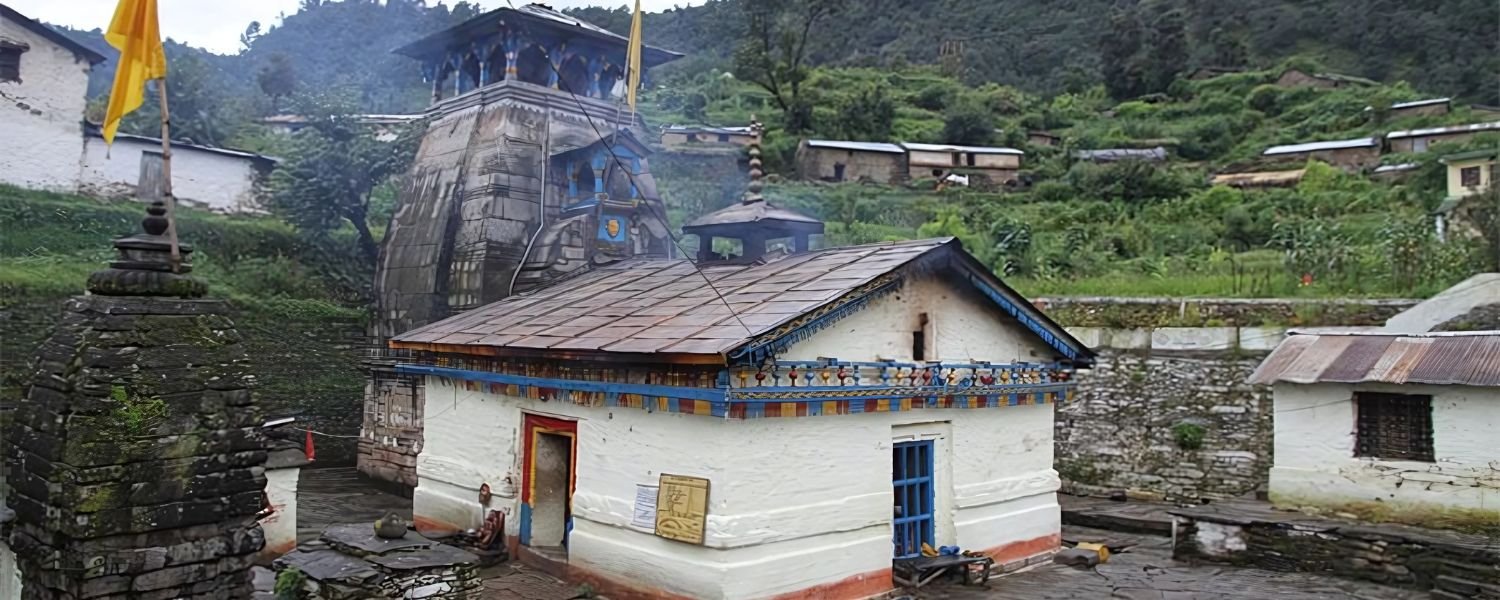
Kalpeshwar Temple is the smallest and easiest to reach of the Panch Kedar temples. It represents Lord Shiva’s matted hair (locks) and is located at an elevation of about 2,200 metres (7,200 feet). The trek to Kalpeshwar, which is about 11 kilometres from Helang, is considered an easy to medium-level walk.
The tranquil surroundings of the Kalpeshwar Temple make it a serene destination. Many pilgrims prefer this temple due to its serene atmosphere, which is ideal for those who want to escape the hustle and bustle and spend time in prayer and meditation.
The valley location of Kalpeshwar adds to its allure, and because it’s easier to get to than other temples, a greater range of pilgrims can come.
Why Panch Kedar Is So Important
Since each temple in Panch Kedar symbolises a distinct aspect of Lord Shiva’s divine form, they are all extraordinarily unique. These temples are evidence of the belief that Lord Shiva, in all his forms, is everywhere, even when we cannot see him. The temples in Uttarakhand’s Garhwal area each represent a distinct facet of Shiva’s strength and elegance.
Earth, water, fire, air, and space are the five fundamental elements of nature that are symbolised by the five temples. They serve as reminders of the connection between the divine and the material world and constitute the basis of existence.
Because of the temples’ location in the high altitudes of the Himalayas, followers are able to contemplate the sacred connection between spirituality and nature.
A lot of pilgrims think that going to all five temples brings peace, forgiveness, and soul-cleansing. The arduous treks through rough terrain and shifting weather, in particular, are a physical and spiritual test on the way to these temples.
The journey’s challenges are believed to aid in the body’s and mind’s purification, adding to the significance of the temple visits.
For individuals who set out on this path, the journey is about the transformation that takes place along the way, not just about getting to the temples.
A person’s faith and patience are strengthened by the physical effort, spirituality, and connection to nature, which ultimately draws them nearer to God.
A journey towards inner peace and spiritual awakening, the Panch Kedar pilgrimage is more than just an outward experience.
The Trekking Experience
It’s not easy to get to the temples of Panch Kedar. Trekkers must be prepared for difficult walks and erratic weather because these temples are situated in isolated mountainous regions.
About 18 to 21 kilometres make up the journey to Kedarnath, which usually takes 6 to 8 hours. Pilgrims must traverse steep, uneven paths, making the journey difficult. Although Tungnath’s trek is shorter—about 3.5 kilometers—it is still fairly taxing due to its high elevation.
More difficult is Madhyamaheshwar, a three-day, 32-kilometer trek that takes pilgrims through hilly and densely forested areas. The 20 to 22-kilometer trek to Rudranath typically takes 3 to 4 days, and the difficult terrain and high elevation make it even more difficult.
Among the others, Kalpeshwar is the easiest to reach and the shortest, requiring an 11-kilometer hike.
The paths offer stunning views of the mountains and wind through open meadows, streams, and charming forests. But because the weather can change quickly, it’s important to pack rain gear, warm clothing, and sturdy shoes.
Travelling to these holy temples will be safer and more comfortable if you are ready for the erratic weather.
The Architecture of the Temples
An architectural wonder, the Panch Kedar temples were specifically built to withstand the severe mountain weather and rough terrain of the Himalayas. These temples, which were built with wood and big stones, have withstood centuries of natural adversity.
In spite of the harsh weather outside, the interiors are kept safe and warm thanks to the sturdy walls that are designed to keep out the cold winds and heavy snow that frequently cover the area.
Because of their distinctively sloping roofs, the temples are protected from being weighed down or damaged by heavy snowfall.
It’s ability to endure the harsh winter weather on the mountain, which frequently brings with it freezing temperatures and a lot of snow, is guaranteed by this careful design.
They have exquisite carvings of gods and the natural world despite their straightforward architecture. The temples’ spiritual significance is increased by these elaborate yet understated carvings, which give them a calm and holy atmosphere.
In addition to being purely decorative, the carvings represent the divine relationship that exists between the temples, the natural world, and the people who visit them.
These temples are testaments to the tenacity and power of the divine and the people who have cared for these hallowed locations for centuries, having withstood earthquakes, severe weather, and the test of time. Their robust design is proof of the ancient architects’ wisdom and the builders’ unwavering faith.
The Role of Adi Shankaracharya

An important contributor to the revival and promotion of the Panch Kedar temples was the renowned Hindu philosopher and saint Adi Shankaracharya, who lived in the eighth century.
Renowned for his deep spiritual insight, Shankaracharya travelled all over India to revive Hinduism by highlighting the value of traditional teachings and reviving religious rituals.
He recognised the Panch Kedar temples’ spiritual significance and close ties to Lord Shiva when he visited them during his travels.
Adi Shankaracharya is credited with establishing particular guidelines for worship and rituals in order to preserve and advance the worship of Lord Shiva at these hallowed locations.
His work guaranteed the survival of the spiritual traditions that surrounded these temples.
In order to maintain the fervour for Lord Shiva for future generations, he also planned festivals at these temples. People were urged to visit the temples during these celebrations, deepening their relationship with God.
The Panch Kedar temples were preserved in the hearts and thoughts of devotees thanks in large part to Shankaracharya’s contributions.
His impact has endured for centuries, and his contribution to making these temples important pilgrimage sites is still essential to maintaining their spiritual and cultural significance.
His legacy lives on today, as pilgrims from all over the world visit the temples.
Modern Challenges and Care
The region faces a number of difficulties as the number of tourists visiting the Panch Kedar temples keeps growing. Because too many pilgrims cause pollution and harm to the area’s natural beauty, the pilgrimage can put a strain on the environment. Particularly in such isolated and pristine areas, too much foot traffic can damage the terrain and jeopardise the fragile ecosystem in the mountains.
Significant natural disasters have also struck the area, such as the devastating floods in 2013, which brought attention to the dangers of trekking in these mountains.
Pilgrims may be at risk from the severe weather and steep routes, particularly during the monsoon season when landslides and torrential rains are frequent occurrences.
Due to their popularity, these temples are sometimes overcrowded during busy times of the year, which can lead to long lines and a lack of space.
Additionally, the facilities along the trekking routes are frequently insufficient to accommodate the high volume of visitors, which results in a lack of basic amenities and hygienic issues.
The government and neighbourhood organisations are collaborating to address these problems in order to safeguard the pilgrimage’s sustainability, enhance infrastructure, and preserve the environment.
Better waste management, the building of hygienic facilities, and awareness campaigns to teach tourists about responsible tourism are some of the initiatives underway.
The objective is to preserve the area’s natural beauty for upcoming generations while upholding the temples’ sanctity.
Why You Should Visit Panch Kedar
A unique chance to take in the Himalayas’ breathtaking beauty and start a spiritual journey is provided by visiting Panch Kedar. Due to the length and difficulty of the treks, it tests your patience and physical stamina.
Along the way, you also learn about the rich cultural history and ancient Indian legends, which gives you a better understanding of Hinduism’s profound spiritual traditions.
Most significantly, visiting these hallowed temples enables you to establish a relationship with Lord Shiva and ask for his forgiveness, peace, and blessings. The trip offers an opportunity for introspection and spiritual development and is not only about getting to the temples.
Many pilgrims feel that this journey has a significant influence on their lives, despite the physical difficulties. It makes the difficult journey genuinely worthwhile by teaching resiliency, providing a sense of calm, and frequently resulting in a closer relationship with the divine and oneself.
How to Prepare for Your Visit
To guarantee a comfortable and safe journey, careful planning is necessary before beginning the Panch Kedar trek. To develop physical strength and endurance, it’s critical to begin walking or hiking on a regular basis.
Because the weather can change quickly, especially in the mountains, bring warm clothing, rain gear, and sturdy shoes for the trek. Remember to pack any personal belongings and medications you might need for the trip.
It is essential to reserve your lodging and transportation well in advance, particularly during the busiest pilgrimage seasons. To make sure you’re ready for the weather, make sure to check the forecast before you leave.
Respecting the environment is crucial while trekking; try to keep the trails clean and refrain from littering. The locals you meet along the way are vital to your journey, so treat them with courtesy and consideration. A seamless and fulfilling experience can be ensured by adhering to these easy preparations.
Final Thoughts
We learn from Panch Kedar’s story that God is always present, even in times when life seems chaotic or uncertain. Finding God’s presence, conquering obstacles, and strengthening oneself are the goals of the trip to these five temples.
It’s a spiritual path that asks you to embrace the strength that comes with facing hardship, connect with the divine, and face it.
The Panch Kedar pilgrimage offers a singular chance to encounter something ancient, stunning, and potent in the centre of the Himalayas, regardless of one’s identity or origin.
You will have enduring memories and a stronger bond with your spiritual self after following this path.
Please get in touch if you need assistance with trip planning or packing tips. To explore more about these sacred temples and routes, visit our Page.
Har Har Mahadev!
